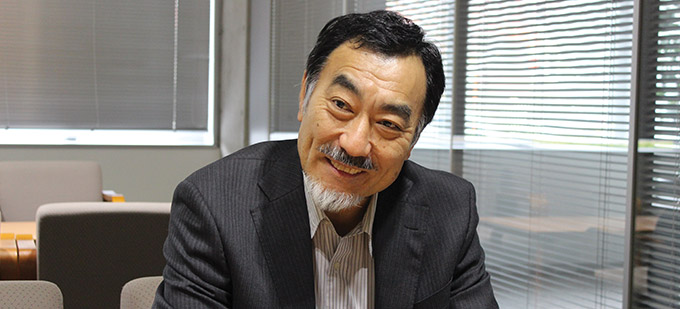Home > Highlighting JAPAN >Highlighting Japan December 2014>Building Tomorrow's Infrastructure
Highlighting JAPAN

Expanding Foreign Market is the key to
Improving Japan’s Infrastructure technology
Interview with
Prof. Hitoshi Ieda
University of Tokyo and the National Graduate Institute for Policy Studies

The public and private sectors are cooperating proactively, and exports of Japanese infrastructure technologies and systems by both private and public organs are thriving. The term “infrastructure technologies” not only refers to building physical infrastructure such as roads, railways and water and sewage systems, it also includes improvements to these systems and the training of related talent. We spoke with Prof. Hitoshi Ieda of the University of Tokyo and the National Graduate Institute for Policy Studies about the impact these exports are having in Japan and abroad.
![]()
Tell us about Japan’s policies on exporting infrastructure technology and systems.
Japan’s infrastructure is subject to natural disasters like earthquakes and typhoons, resulting in high quality that can withstand harsh conditions, all built amidst a dense population and with consideration for the environment. Domestic demand in the infrastructure space has been contracting for the last fifteen years, however. On the other hand, regions like Southeast Asia, South America, Africa and the Middle East have emerging needs for better infrastructure, including many countries where demand is expected to increase. Traditionally, Japan has provided technical support to these countries in the form of ODA, but the Japanese government is moving to augment this by exporting infrastructure as a business in its own right.
Tell us about the current global demand for infrastructure and how Japanese firms are entering the space.
Prioritizing the economic infrastructure is considered the global standard today, because many countries still lack a solid economic foundation. Adding this to countries that also require better lifestyle and medical infrastructure, the global need for infrastructure of all sorts is expected to rise. Japanese firms are actively exporting infrastructure solutions, and their progress is reportedly good. Hitachi has successfully developed a high-speed rail business in the UK that includes railway operation, for example. At the same time, however, there have been major struggles, such as unexpected soil conditions and contract discrepancies when working on highway projects in Algeria. Just having the technology is not a guarantee that things will go well—fully understanding the local customs and structures before proceeding is the key.
What are the strengths of Japanese infrastructure?
Excluding certain parts of Europe, virtually every region on Earth is affected by natural disasters. The world is seeking better infrastructural solutions to these problems, and Japan already has a solid track record of dealing with earthquakes, typhoons and other catastrophes. Our infrastructure is designed on the premise of outlasting severe natural disasters, and this quality and technical expertise is its strength.
What area of infrastructure should Japan be putting more effort into now?
To fully convey the excellent quality of its infrastructure technology and systems abroad, Japan must learn how to work better with other countries. I call this issue “internal globalization”—specifically, it should involve holding events to introduce the infrastructure here to students studying abroad in Japan, holding seminars and performing other types of outreach. People attending these programs will then return to their countries as talent poised to develop infrastructure in a range of fields. Considered that way, each individual is a crucial human asset to Japan.
What effects has Japanese infrastructure had on Japan’s industries?
Japan’s infrastructure has made steady progress. For example, it has been fifty years since we introduced the bullet train, and continuous technological developments such as lighter bodies and lower energy consumption have enabled these trains to attain higher speeds and energy efficiency. Developing technology in this fashion requires an ongoing cycle of market expansion, spending funds on research, and turning research findings into technology innovation. Domestic demand for Japanese infrastructure has reached a saturation point, however, so expanding into the overseas market will enable Japan to further improve its own technology and make greater contributions to the world.
© 2009 Cabinet Office, Government of Japan






